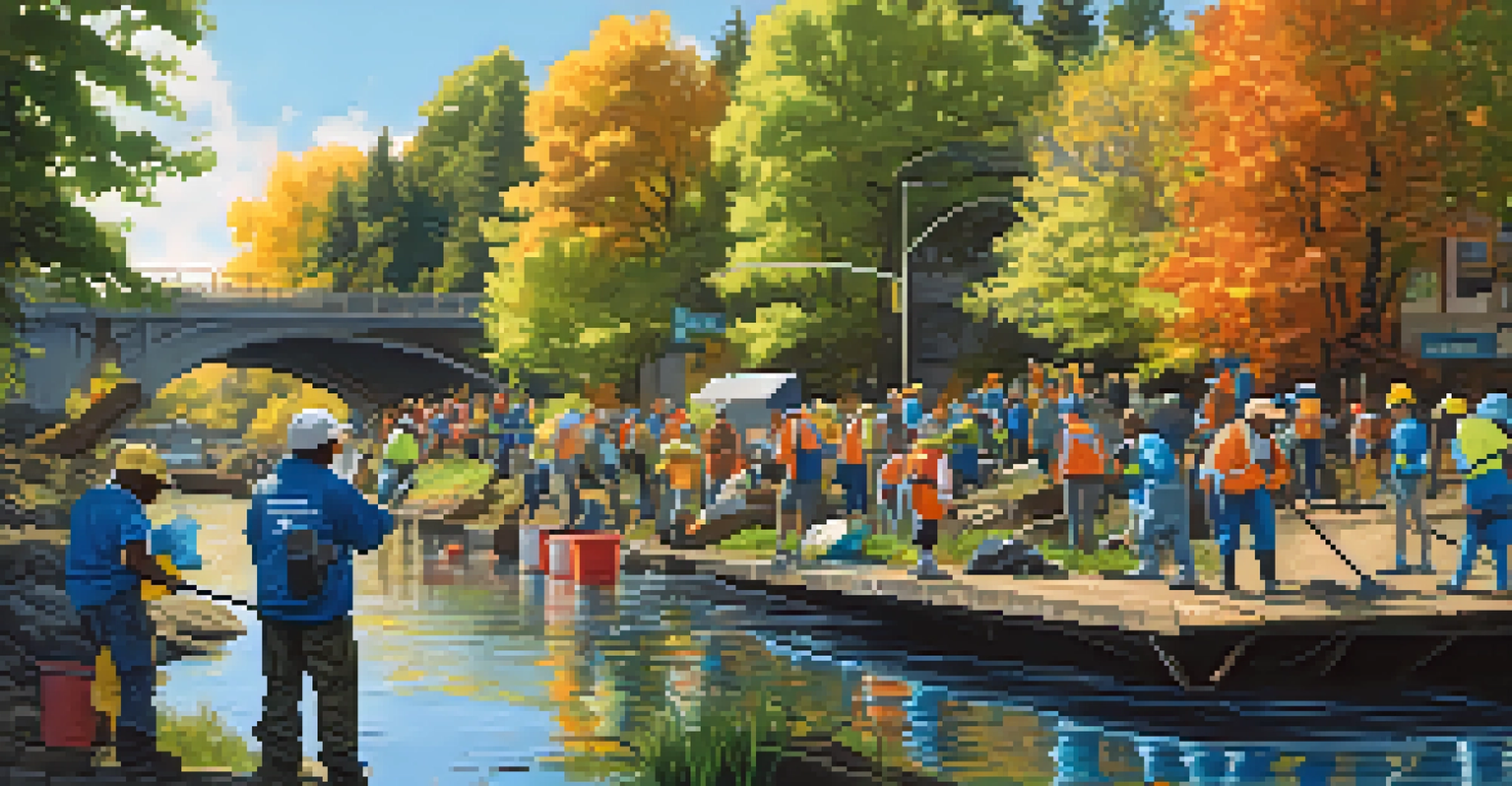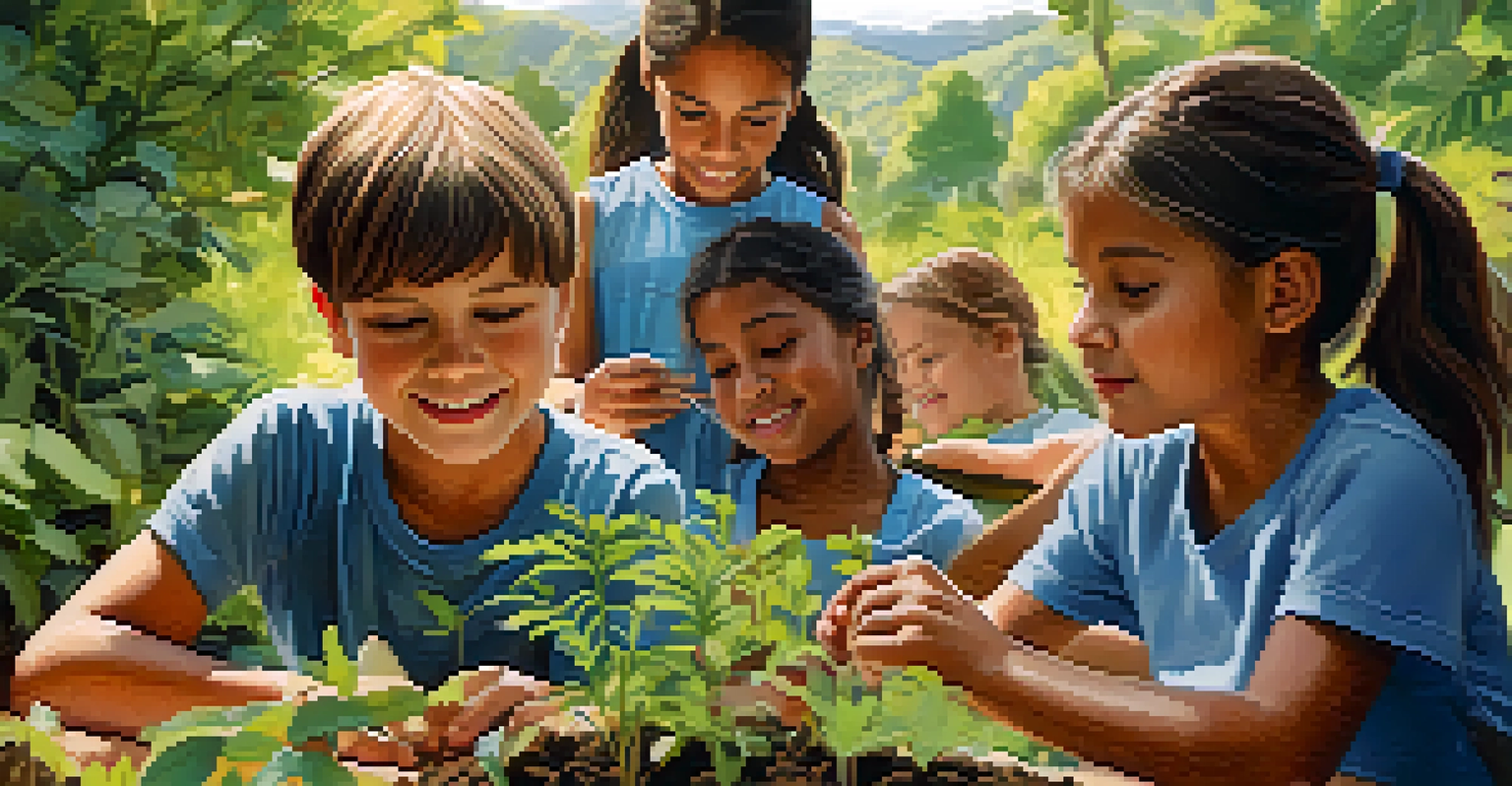The Role of Community in Washington's Conservation Initiatives

Understanding Washington's Conservation Landscape
Washington State is known for its diverse ecosystems, from coastal beaches to towering mountains. This rich environment faces numerous challenges, including climate change and habitat loss. Conservation initiatives aim to protect these natural resources, but they often require community involvement to succeed. Understanding the local landscape helps residents appreciate what’s at stake and fosters a sense of responsibility.
The environment is where we all meet; where we all have a mutual interest; it is the one thing all of us share.
The state's unique geography plays a crucial role in determining the focus of conservation efforts. For example, the Pacific Northwest's rainforests and wetlands offer distinct habitats that need tailored conservation strategies. Engaging with these ecosystems allows communities to identify their specific needs and the best practices for preservation. This localized approach empowers residents to take action in their own backyards.
Moreover, Washington's conservation landscape is shaped by its history of community activism. From grassroots movements to organized environmental groups, the state has a rich tradition of citizens advocating for their natural surroundings. This legacy continues to inspire new generations to participate in conservation efforts and ensure the protection of their cherished environments.
The Power of Local Knowledge and Engagement
Local communities hold invaluable knowledge about their environments, gained through generations of living in harmony with nature. This intimate understanding allows them to identify issues that may not be apparent to outside experts. For instance, local fishermen often notice changes in fish populations and can provide insights into habitat conditions. Engaging these community members in conservation efforts leads to more effective and targeted initiatives.

Community engagement also fosters a sense of ownership and pride in conservation efforts. When residents actively participate, whether through clean-up events or habitat restoration projects, they develop a deeper connection to their surroundings. This bond not only enhances their commitment to conservation but also encourages others to join the cause. Collective action can amplify the impact of individual efforts, leading to significant environmental improvements.
Community Engagement Drives Success
Active participation by local residents enhances conservation efforts and fosters a deeper connection to their environment.
Furthermore, when communities come together, they can advocate for policies that align with their conservation goals. Local voices are essential in influencing decision-makers, ensuring that conservation measures reflect the needs and desires of the people. This democratic approach enhances the effectiveness of conservation initiatives and creates a sense of unity among community members.
Success Stories: Community-Driven Conservation
In Washington, numerous success stories highlight the power of community-driven conservation. For example, the Snohomish Conservation District engaged local farmers to implement sustainable agricultural practices that protect water quality. By working together, they reduced runoff and improved the health of nearby rivers, showcasing the positive impact of collaboration.
We won't have a society if we destroy the environment.
Another inspiring story comes from the city of Seattle, where residents led a campaign to restore the Duwamish River. Through a series of community clean-up events and educational workshops, they raised awareness about the river’s health and the importance of preserving its ecosystem. Their efforts have not only revitalized the area but also strengthened community bonds and pride.
These examples illustrate that when communities unite for a common cause, they can achieve remarkable results. The collective energy and commitment of local residents can lead to tangible benefits for the environment, demonstrating that grassroots initiatives can be a powerful force for conservation.
Building Partnerships for Greater Impact
Effective conservation often requires partnerships between communities and various organizations, including non-profits and government agencies. These collaborations can pool resources, expertise, and funding to tackle conservation challenges more effectively. For instance, partnerships between local tribes and environmental groups have been instrumental in restoring salmon habitats across the state.
Moreover, these alliances can help bridge the gap between traditional knowledge and scientific research. By integrating local insights with scientific data, conservation initiatives can be better tailored to meet the unique needs of each ecosystem. This synergy enhances the effectiveness of conservation strategies and fosters a more inclusive approach to environmental stewardship.
Local Knowledge is Vital for Conservation
Communities possess unique insights that can significantly improve the effectiveness of conservation initiatives.
Partnerships also provide opportunities for education and training, empowering community members to take active roles in conservation efforts. Workshops and volunteer programs create pathways for individuals to learn about ecological practices and contribute to meaningful projects. As communities grow in their understanding and capacity, the overall impact of conservation initiatives increases.
The Role of Education in Community Conservation
Education plays a crucial role in fostering community engagement in conservation initiatives. By raising awareness about environmental issues and the importance of preserving natural resources, communities are more likely to take action. Schools, local organizations, and community centers can serve as hubs for environmental education, providing resources and hands-on experiences.
For example, programs that involve students in local conservation projects not only teach them about ecology but also instill a sense of responsibility towards the environment. Children learn the significance of biodiversity and the impact of human activities on their surroundings. This knowledge nurtures a generation of environmentally conscious citizens who are more likely to advocate for conservation as adults.
Additionally, community workshops and informational sessions can empower individuals to implement sustainable practices in their daily lives. Whether it’s learning about composting, native plant gardening, or water conservation techniques, education equips residents with the tools they need to make a difference. As communities become more informed, their collective impact on conservation initiatives grows exponentially.
Celebrating Community Achievements in Conservation
Recognizing and celebrating community achievements in conservation is essential for motivation and continued engagement. When communities see the tangible results of their efforts, it reinforces the value of their contributions. Events such as community award ceremonies or local conservation fairs can highlight successful initiatives and inspire others to participate.
Sharing stories of success not only boosts morale but also spreads awareness about effective conservation practices. These celebrations create a ripple effect, encouraging neighboring communities to adopt similar initiatives. By showcasing what works, communities can learn from each other and collaborate on larger-scale projects.
Education Fuels Environmental Action
Educational programs empower individuals to adopt sustainable practices and cultivate a generation of environmentally conscious citizens.
Furthermore, celebrating achievements fosters a sense of community pride and belonging. When residents come together to acknowledge their shared accomplishments, it strengthens social ties and enhances collective responsibility for the environment. This camaraderie is vital for sustaining long-term conservation efforts and ensuring that communities remain committed to protecting their natural resources.
Future Directions for Community Conservation in Washington
Looking ahead, the future of community conservation in Washington is promising yet requires continued effort and innovation. As environmental challenges evolve, communities must adapt their strategies to address new issues effectively. This adaptability can be fostered through ongoing education, collaboration, and the sharing of best practices.
One emerging trend is the integration of technology in community conservation efforts. Tools like mobile apps and online platforms can facilitate communication, data collection, and community organizing. By harnessing technology, communities can enhance their outreach and streamline their conservation initiatives, making them more accessible and efficient.

Ultimately, the success of future conservation efforts will hinge on the commitment of local communities. By prioritizing collaboration, education, and celebration of achievements, Washington can continue to lead the way in community-driven conservation. Together, residents can safeguard their natural heritage for generations to come.